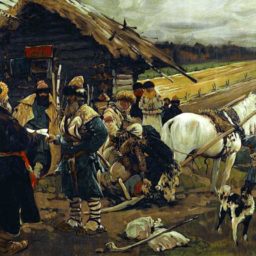The business of music changes at a frightening pace. At the same time, we’re stuck with archaic methods of copyright. Being a musician today means balancing keeping abreast of new modes of distribution while chasing royalties. Crucially, the question of where your music sits in the broader soundscape and where you can find your audiences are more pertinent than ever.
Daniel Ek told investors in July 2020 that musicians should release more music, more regularly. This is the crux of streaming: musicians should be creators who churn out content to stay relevant to algorithms. What does it mean to embrace the creator economy as a musician? How can you play the game instead of being played by agents, labels, streaming services, etc.? And what do you need to do this?
The basics

The bible in the music business, and music business-related courses, is still Don Passman‘s All you need to know about the music business. The book tells you about what kind of people you need around you as a musician, record deals, copyrights, publishing, touring, merch. From there we get to issues of financing, PR, and marketing. There’s other books, for sure, but Passman’s is the one most people fall back on. And while he has done well to keep on top of new developments, there are elements in the reality of a musician’s every day life that aren’t captured in the book. Let’s run through the basics before turning to those new challenges.
To sign or not to sign, that is/was the first question
In the current landscape, most artists still face this question first: do I want to aim to sign with a major record label? Do I aim for an independent label or do I go DIY? There’s advantages and disadvantages to each one:
- Major label deal means lots of support, global links, experienced people, and the potential to piggyback off of a bigger artist’s success. It also means losing some control over your work and signing away of your rights. You can also be seen as collateral for another artist instead of your own person with a creative vision.
- Signing to an independent – in as far they still properly exist – gives you an international network geared specifically towards artists. Moreover, you won’t get lost in a large roster of others. There can, however, be a lack of financial leverage and knowledge outside of the bigger global markets.
- Going DIY means having full control of your creative vision, your rights, and being in control of your communications. It also means you require your own capital, your own network, and a willingness to put in work you might rather spend making music.
Copyrights
Copyright is about ownership, but also about having the right to copy, perform, play, broadcast, and adapt a work of music. Copyright is valuable and always a partnership between various people involved in writing a song: usually 50/50 between music and lyrics. It’s important to note that for copyright to come into play a recording is necessary. Which leads into the issue of the master rights. Whoever owns those rights gets to decide how to exploit the recording. It used to be the case that whoever paid for a recording would own the master rights. This is, for example, why the archives of public broadcasters are so valuable: they paid for the recording and thus claim the master rights allowing them to put it on TV, YouTube, etc.
Touring
A painful topic while we’re still riding pandemic waves, but still very important. Touring can make for good income. Yet, how do you organise it well? First off, find the right people to book and manage your tour. Then, think about how to market yourself and how to take advantage of the marketing of the venues where you will play. Furthermore, think about ticketing and what you can do with dynamic pricing structures and VIP ticketing. Once you get a larger fanbase it also become an option to approach sponsors for your tours.
Financing
It’s important to know how money flows through the music industry. Moreover, it’s important to know who makes that money and how they do that. Traditionally, this involved record and publishing deals – with advances – touring, merchandise, royalties derives from CMOs, record sales and potential royalties of those. Of course, there’s also the potential to get on soundtracks or get into synch deals. Finally, there’s the option to go direct through crowdfunding, subscriptions, and donations.
Marketing
Any good marketing plan starts with asking why you do what you do and from there explaining why others should care about that too. Getting your marketing plan together can involve a PEST (political, economical, social, and technology) analysis of your potential demographic. You can also do a SWOT (strengths, weaknesses, opportunities, threats) analysis of your product – your music. From there, you can start to determine your market, your audience, which channels to use, and which tools to implement. Before you start anything, make sure you do a projection of the results you want. And ask important questions like ‘when will I make a profit?’
The everyday life challenges of right now

While those basics are necessary, it’s also important to keep up with new opportunities and changing technologies. Especially as and when they challenge the basic structures as described above. It’s easy to feel caught within a wide web of channels to engage with, algorithms to perform in, playlists to get put on, and audiences to speak to. However, it’s also possible to focus on specific tools, platforms, and technologies and build community.
Who are your audience(s)?
I’m purposefully ambiguous about the plural in the header for this section. You will have more than one audience, but it’s also important to start small. If you can find your niche that will give you a solid base to build out from. The reason I want to talk about audiences in plural is because even a niche will have multiple different audiences. A useful thought experiment, which I take from Jack Abraham, is to try and write down up to 100 different audiences for your music.
Tools & Platforms
There are many, many tools out there today to create and release music. So much, so that the number of creators that are self-releasing is growing fast.

On the one hand, it’s wonderful to have the tools available to quickly release your music to any and all streaming providers. On the other hand, it’s impossible to do that and stand out from the crowd of 60,000 daily uploaded tracks. At which point it becomes interesting to look at other available tools, especially if you’ve started carving out your niche audience. You can, for example, monetize that audience directly through a subscription model. Or, you can consider what you should make to best speak to your niche audience. It might be the case that simply making and releasing music isn’t the best way to go about that. Instead, video might work better for you. Take livestreaming, which can be done in a concert form, but also in the form of a more narrative arc where you take your audience into your creative process.
Experiment
Once you start to think about your audiences and the great variety of tools and platforms available to build and speak to your community, it’s important to experiment. Not only should artists now act like entrepreneurs, they would do well to think like product managers too. Thinking about go-to-market strategies isn’t a bad thing, to give one example. For so long, the focus for musicians has been to create an album and release one or more singles in the run up to the album’s release. Nowadays, you might be better off giving concerts with your work-in-progress, or simply livestreaming your studio work. Whatever it is, you won’t find out if you don’t experiment. And whoever your community is, that first niche you tie to yourself or your band those are the ones you have to keep involving in feedback loops throughout your experiments.
A course to tackle the everyday
To try and work through the challenges of the everyday realities of musicians – and perhaps agents and label owners as well – I’m working on a short cohort-based-course with the aforementioned Jack Abraham. The course will first of all provide a global community of learners and practitioners. Secondly, it provides a problem-motivated and practical way to learn about what’s going on in the music industry today. It brings the most recent developments into the (virtual) classroom. Third, it gives people the tools to play the game instead of being played by the game. If you’re interested in this course, feel free to talk to me directly or help us about by taking a short, 5-question survey.

